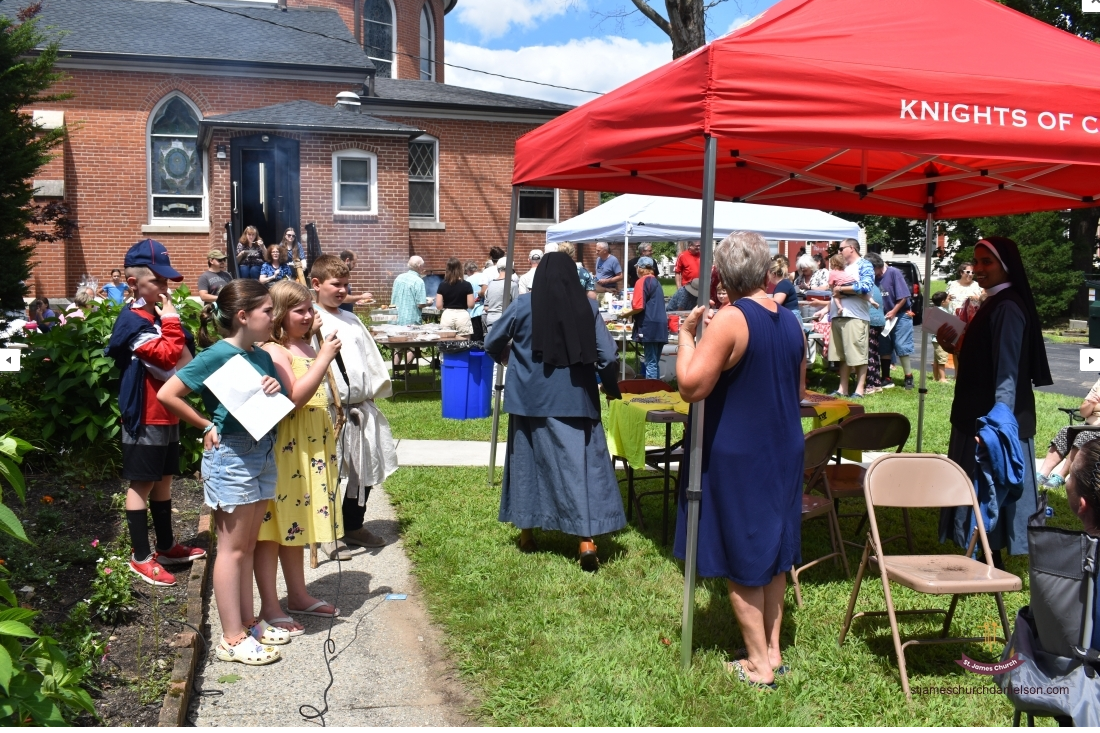Since the arrival of the first La Salette priests in Danielson in 1895, Saint James Church has worked in countless ways to serve the spiritual, educational and economic needs of our parishioners, students and wider community. These efforts continue today, and this article will briefly highlight several examples.
In 2022 the Vocations Committee was established with a general goal of developing programs to bring the Saint James community together, and the more specific goal of raising awareness of the importance of vocations. To that end, the committee plans yearly events/activities for the parish. At all of these gatherings books and literature on the history and mission of the La Salette order are made available.
For example, the committee ran a family-centered event for Saint Joseph’s Day. After Mass on Saturday, March 22, parishioners were invited to the church hall for food and activities designed for children and their families. A brief talk on Saint Joseph introduced the program, and participating families were given small gifts. Similar events focusing on family took place on Mother’s Day and Father’s Day as well.
The committee helps to organize and run the annual Parish Picnic. Offered in July in conjunction with the Feast of Saint James, this popular event offers an opportunity for young and old to relax and come together in fellowship.
The committee has also sponsored a Religious Appreciation Day meant to acknowledge the work and vocations of the priests, sisters and deacons of Saint James. A luncheon was held for the parish, and students from our school created posters and cards for those being recognized.
Our school is a second example of the good work and mission of Saint James. Opened in 1874, the school provides a dynamic place of learning for children in pre-school through eighth grade. Our dedicated teachers commit themselves to the spiritual and intellectual development of our students in a true Catholic spirit. The school offers our students opportunities to engage in sports, community service endeavors as well as a robust after school program. In May 2025, Saint James celebrated the one hundred-fiftieth anniversary of the school with a week-long series of events concluding with Holy Mass celebrated by our Bishop, Richard Reidy.
Finally, and most recently, we have established a new group called “La Salette Laity”. Formerly known as the “Friends of La Salette”, the aim of the group is for members to learn more deeply about the history, message and spirituality of La Salette. Starting in October 2025, laity will meet each month for instruction on a variety of topics offered by our priests. Members will pray for vocations and support the La Salette missionaries in their ministries.
These are just a few examples of the spiritual and missionary life of Saint James. We look forward to many more years of fruitful ministry in our parish, school and community.

